Like many kids who grew up during the ’50s, I guess I was attracted to (among other things) the Beat Movement. I read the books and fantasized about being “on the road” and even later did some of that, but first I had to check out the coffeehouse scene. It was 1957 (and I was still in high school down at Mar Vista in Imperial Beach). I don’t know exactly how it all came about, but one of the first places I ventured into was called the Zodiac. It was on the street level of the same building that housed the Pacific Ballroom on the second floor, near the corner of 11th and Broadway. The artist I saw on that first visit was Mickey Myers, and I don’t remember anything about him except that he used the Mickey Mouse Club theme song as a closing number. About a year later I went to the Zen Coffee House and Motorcycle Repair Shop down at Broadway and India and saw Judy Henske there. I have to say it made a more lasting impression on me. Neither one of those places were around for very long, probably because of where they were located. At that time, downtown San Diego mostly attracted sailors on liberty and a few reckless souls (like me, occasionally) who were more interested in other kinds of music.
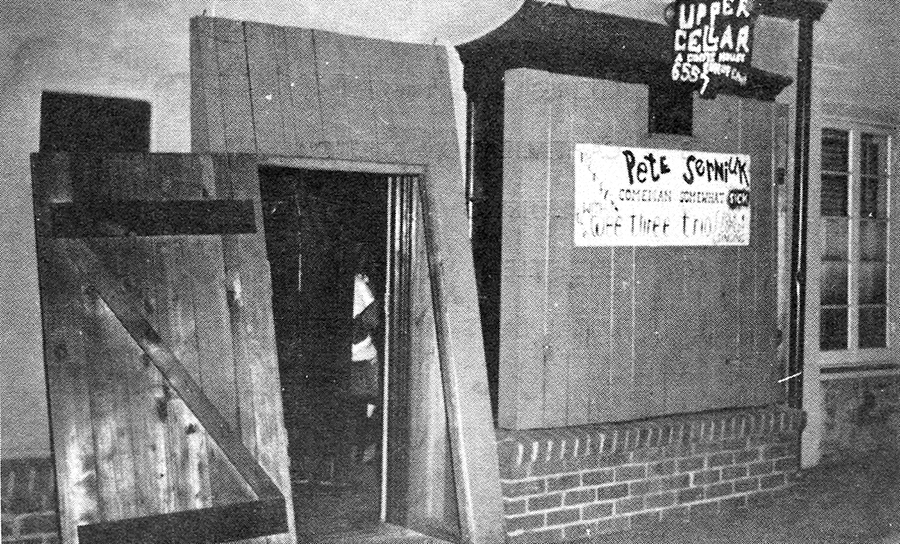
The Upper Cellar exterior.
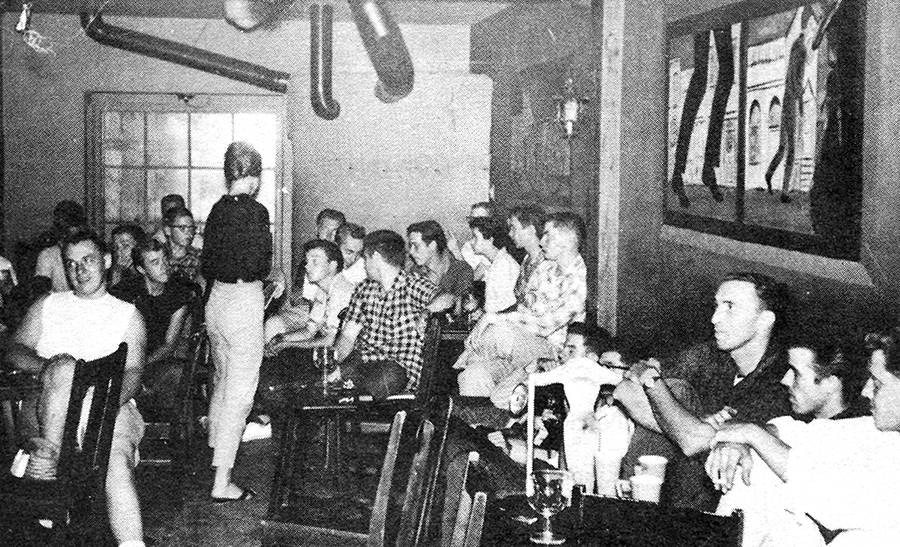
Interior of the Upper Cellar.
A coffeehouse that was more memorable to me was the Upper Cellar at 6557 El Cajon Blvd. I first saw Fred Gerlach there, who encouraged me to buy my first Leadbelly record, and Hadley Bachelder, who got me hooked on Big Bill Broonzy. Along about 1960 Terry Houston and I got up on stage at an Open Mic at the Upper Cellar and sang a folk song (I don’t remember what it was) and when people actually applauded, I was hooked. Bob Stane, the owner of the club and Pete Serniuk (resident comedian and emcee) were encouraging and told us to come back, which we did a few times. During the early ’60s the Upper Cellar tried to move to a bigger location on University Avenue and took a stab at booking big name folk acts (I saw the Terriers there) but was only open for a short time. Bob went on to a long run as manager of the Ice House up in Pasadena and operates a coffee house (The Coffee Gallery) in the L.A. area to this day.
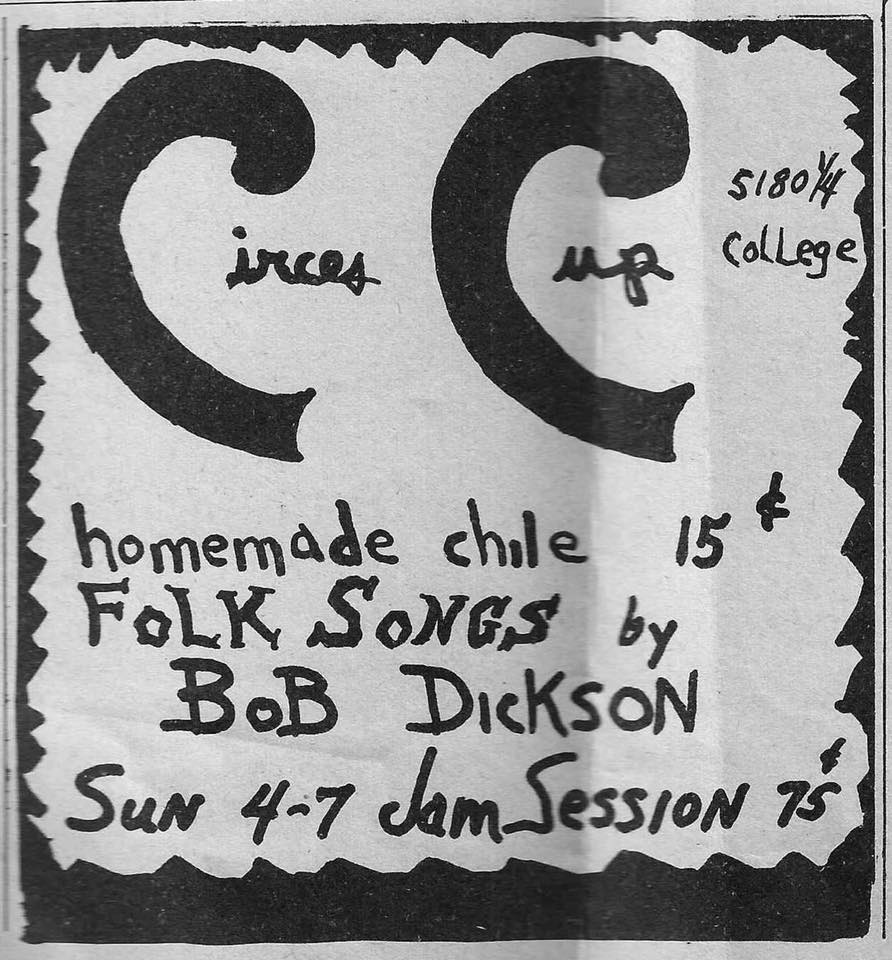
Ad for Circe’s Cup.
About the same time a bunch of San Diego State students opened a place called La Parise just a few steps from the SDSU campus. Inside the walls were covered with murals of the interior of a French bordello, and all the faces of the many characters were those of the then students and professors at San Diego State. Not long after the place opened, the ownership changed and the name changed to Circe’s Cup, but the interior murals stayed. The Ivory Tower Jazz Quartet played there regularly and that’s where I saw Josh White, Juanita Hall, and several well-known out of towners. The era of the Great Folk Scare was in full swing. The owner of Circe’s Cup was a guy named Butch Miller, who kept it open for three or four years before eventually drifting on. After that it became a pool hall (called Circe’s Cue—they only had to change part of the sign), then a sandwich shop (with all the murals painted over in a dull flat white), and now the building isn’t even there any more since the university has taken over the whole area. Many people who remember the Cup also remember the cheap apartments upstairs, which you had to turn sideways to get in to. Bookcase, bed, hot plate, and not much else. Living upstairs at the Cup was always bohemian student life at its worst but then downstairs there was some mighty good music.
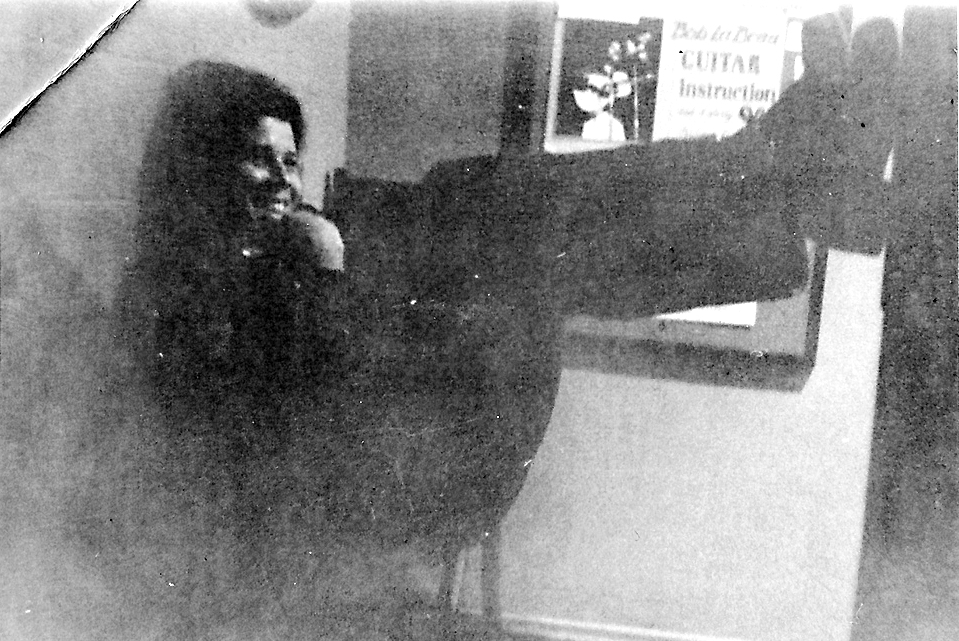
Tom Waits was doorman at the Heritage Coffeehouse.
The other coffee house that made a lot of noise was the Ballad Man in La Jolla, first run by a guy named Jay Turner and then by Bill Sherman. I was only out there a few times, mostly to see someone I was familiar with from the Cellar or the Cup. There‘s a song Jay Turner wrote about the Ballad Man that I still hear people do today some 40 years later. That’s pretty high praise for a small place on Pearl Street in La Jolla. Forty years—that’s almost a folk song. The Ballad Man closed its doors at some point in the early ’60s.
There were other coffee houses in those early years, too. A place called the Voodoo Man in La Mesa was open for a short time, but I never went there. There were also a couple of places—I think three different ones—with the same name: La Bohème, however none of them lasted very long.
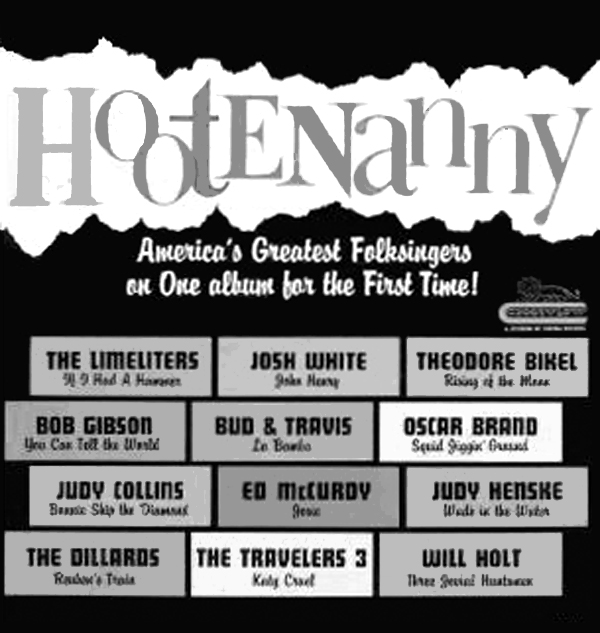
This was a time when folk acts moved into the restaurants and bars for the first time (when folk became pop for a while) and clubs like the Mantiki and others featured “striped shirt trios.” Some of the performers who were working in San Diego coffeehouses during those early years, along with Fred Gerlach and Hadley Bachelder, included Ed Ellison, John Lee, Pattie Hodges, John Read, Eric Hord, Hoyt Axton, the John B. Trio, the Wee Three Trio, Bill Sherman, Judy Henske, and Jay Turner. I’m leaving a lot of people out, but I can’t put names to the faces. I was starting to make trips to L.A. and then to places like the Unicorn and the Ash Grove and places in between like the Golden Bear in Huntington Beach and the Prison of Socrates in Newport Beach.
It was an interesting time, more or less disappearing for a year or two during the early ’60s, and then making a comeback in the mid to late ’60s with places like the Heritage, the End, and the Land of Odin, which I’ll talk about later.
Recordially,
Lou Curtiss
Reprinted from the San Diego Troubadour, December 2003.

